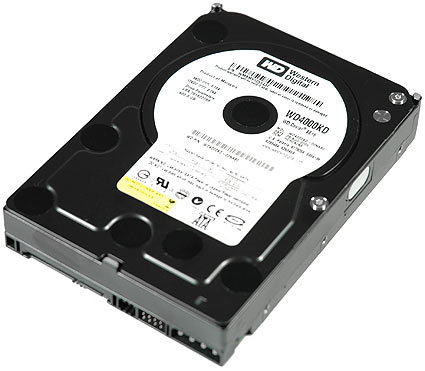The WD Caviar SE16 400 GB Gets Ready to Face The World
Western Digital's WD4000KD Reviewed
Whenever we talk to representatives of storage companies these days - especially hard drive makers - they are always very excited about the future. The demand for storage is increasing, both in the home and business segments, and the traditional hard drive companies are feeling invigorated.
The growing interest in storage of all sorts is going to translate into larger, faster and, most important, more innovative products that extract as much as possible from this growing market. While Serial ATA II in desktop PCs is not going to have any noticable impact on performance, one of the most significant prospects is the pending introduction of perpendicular recording technology. In the past, bits have been stored by magnetizing grains of material in a direction parallel to the platter surface, but future drives will write bits vertically, allowing for further increases in storage densities.
This new technology is still a couple of months away, so the latest drive generation builds up on more or less 'traditional' technology. In the case of Hitachi, this has already resulted in a 500 GB DeskStar drive. However, that drive was achieved only by putting together five platters storing 100 GB each, not through any technological advances.
Similarly, if you expected WD to put together a 400 GB drive with three platters only you may be disappointed. The only company to offer a 400 GB three platter design is Seagate. Instead, WD extends its existing design from three to four platters with the WD4000KD. It's pretty obvious that the new drive is not going to establish new performance records, but let's see what the 16 MB buffer is able to do.
Get Tom's Hardware's best news and in-depth reviews, straight to your inbox.
Current page: Western Digital's WD4000KD Reviewed
Next Page Western Digital Caviar Special Edition 16 Aka. WD4000KD
Patrick Schmid was the editor-in-chief for Tom's Hardware from 2005 to 2006. He wrote numerous articles on a wide range of hardware topics, including storage, CPUs, and system builds.
